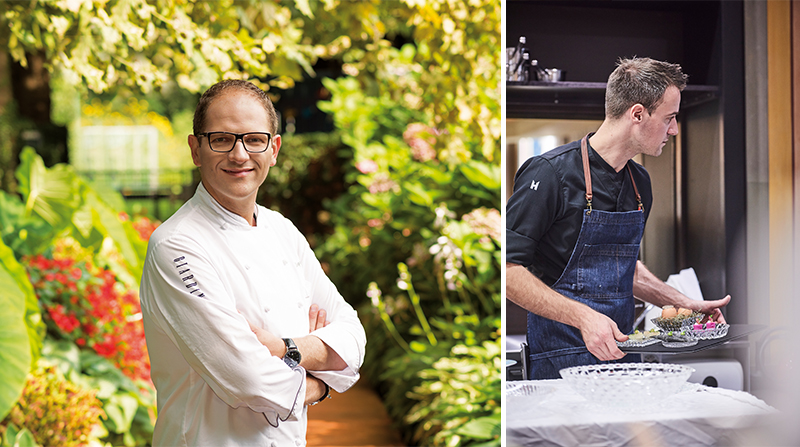

Chefs Rolf Fliegauf And Marcel Skibba. Credit: Ecco and Andreas Caminada
Think about food in Switzerland, and what comes to mind? This central European nation may be best known for its excellent cheeses and fine chocolates — both worthy of a trip in themselves — but there’s plenty more to this country’s cuisine scene.
Boasting three locations across the country, Ecco is the brainchild of German chef Rolf Fliegauf, who runs the kitchens at the St. Moritz and Ascona outposts while his former sous chef oversees operations at the Zurich venue.
Also hailing from Germany, chef Marcel Skibba manages the kitchen at Igniv, the fine-dining restaurant at the grand Badrutt’s Palace hotel overlooking the Alps in St. Moritz.
We recently talked with these two respected toques to get the scoop on the Swiss epicurean landscape and why this alpine destination should be on our culinary bucket list this year.
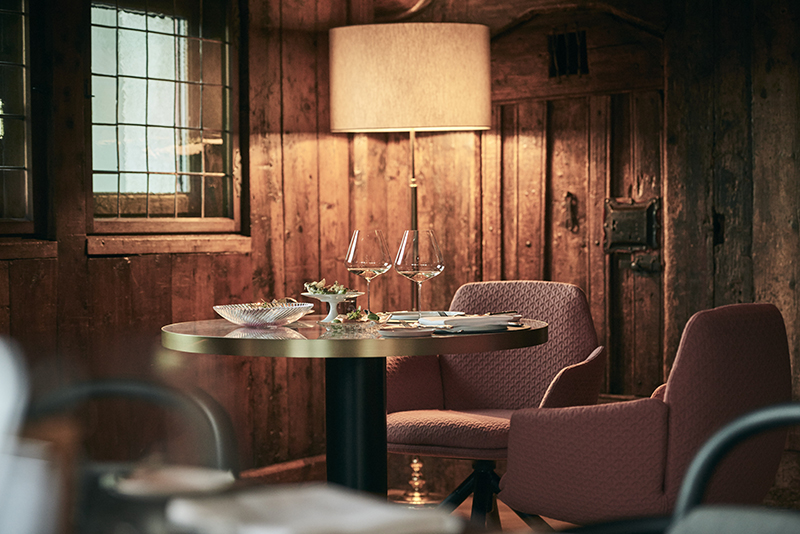
Igniv. Credit: Andreas Caminada
Tell us something about your background.
Fliegauf: I grew up in a small town in Germany. My parents ran a rustic restaurant and, as a boy, I liked to stay in the kitchen with my mom. I wanted to be a chef from the time I was very young. Later, I apprenticed in a hotel and learned that, [food-wise], there was something beyond what my parents did. I’ve now lived in Switzerland for 15 years.
Skibba: I was raised in the Black Forest region in Germany, near Switzerland. I served my apprenticeship in a traditional hotel, then gained experience in different top kitchens in Germany. In 2015, I came to Switzerland to work with chef Andreas Caminada in his restaurant Schloss Schauenstein. In December 2016, Caminada opened Igniv in St. Moritz, where I have been head chef since.
What can you tell us about Swiss cuisine today?
Fliegauf: Switzerland is a small country, but it has a big mixture of influences — from France and Italy to mountain cuisine and Mediterranean flavors. Every region has its own kitchen, which makes the food scene interesting.
While many chefs can be traditional, originality is now very important as well. The Swiss want to find the best products, even if they’re coming from overseas, though many chefs, influenced by the Nordic kitchens like Noma, are emphasizing regional products.
Skibba: Zurich has established itself as the country’s authority in the food scene. Many young chefs with global experience are bringing creative concepts to this multicultural city. St. Moritz, where I’m based, attracts important chefs and has great culinary offerings, too, which is remarkable considering it is really just a small alpine village.
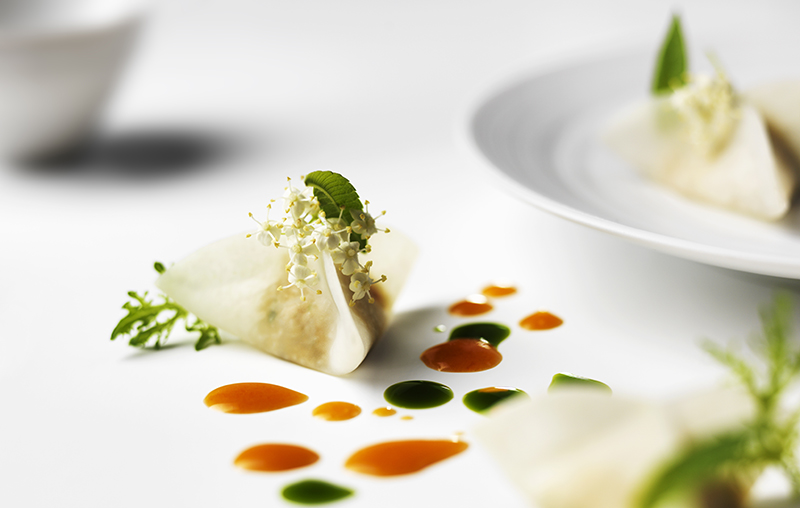
Ecco Elegance. Credit: Ecco
Describe your restaurants.
Fliegauf: Ecco St Moritz is located in a former chapel on the lower level of Giardino Mountain Hotel. It’s open only in the winter, while Ecco Ascona is open only in summer. We move the whole kitchen, a team of seven, each season. At both restaurants, we serve dinner five days a week to just 28 people each night.
Skibba: The name Igniv comes from Romansh, executive chef Andreas Caminada’s native language, and means “nest.” Our interior designer, Patricia Urquiola, created a dining room that [reopens for the season on December 21 and] gives guests a feeling of comfort and security, just like in a nest, without altering the historic character of the space in the Badrutt’s Palace hotel.
Tell us more about the dining experience.
Fliegauf: Meals at Ecco are officially nine-course tasting menus, but they include lots of snacks, making the whole experience 16 or 17 courses. We do lots of experimenting, trying ingredients in unique combinations, like beets with coffee and hibiscus; carrots with tangerines; or Japanese wagyu beef with pickled veggies. We pair proteins with vegetables, without the heavy starches of traditional Swiss mountain food. People always ask for our foie gras ice cream, which is not for dessert, even if we take it off the menu!
Skibba: At Igniv, our concept is sharing plates, where each “course” is made up of several small dishes. The sharing experience helps guests connect with each other, as all shared dishes are served in the middle of the table. We create individual dishes not only to stimulate the senses but also to animate conversation around the table.
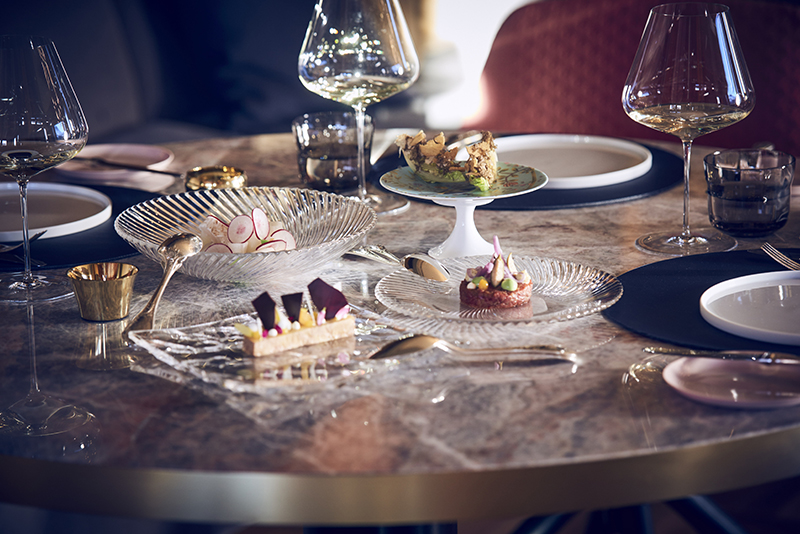
Igniv. Credit: Andreas Caminada
Do you have favorite ingredients or food combinations?
Fliegauf: In developing new dishes, normally we think first about the product we want to use. For example, pigeon or a particular cut of beef. Then we think about the season and what our producers can give us during that season.
Then, we consider our own style. We want to put power inside, with lots of strong flavors, then make it fresh, using citrus and herbs. Citrus fruits, especially yuzu, lemons and kaffir limes, are important ingredients for me, adding acidity and freshness.
Skibba: At Igniv, we like using unconventional products, mostly from Switzerland, [that come] from producers who are as quality conscious as we are. For example, instead of a beef fillet, we prefer to use lamb belly. I also like serving regional fish, rare fruits and vegetables from the region. Techniques such as pickling, marinating or salt-roasting help us conceive new flavors and aroma combinations.
What about Swiss cheeses?
Skibba: The cheeses we serve, from the best alpine dairies in this country, are delicious just as they are and have little need for refining.
Fliegauf: It’s difficult to modernize liquid cheese. But seriously, while we serve a cheese course, we tend to stay away from cheeses in other dishes. We don’t want dishes to be too heavy or rustic.
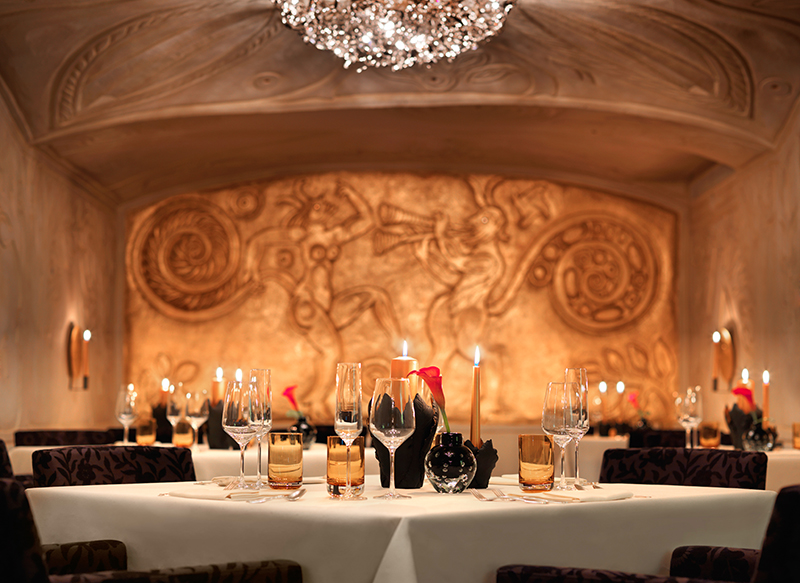
Inside Ecco. Credit: Ecco
And your desserts?
Fliegauf: In general, we use less sugar in our pastries, pairing lots of different flavors, even vegetables like cauliflower or cucumber. We might do a goose liver praline with hazelnut, make a petit four with muscovado sugar and cauliflower or create a dessert of white fungus [a dried Japanese mushroom] cooked in a stock of lemongrass and fresh yuzu juice. Of course, we use chocolate in desserts as well.
Skibba: Although we are too new to have “signature dishes,” there are some dishes that guests associate with Igniv. For dessert, it’s the Engadiner Berggipfel [“Engadin Mountains,” topped with peaks of meringue].
Is there a tight-knit chef community in St. Moritz?
Fliegauf: Yes, the town is full of cool, young chefs, and we all know each other. But our winter season is short and packed with special events, like the St. Moritz Gourmet Festival, so there’s not much time for getting together socially — all the chefs are too busy. The good thing, though, is that we can call each other and say, “I need to borrow a few truffles” and everybody helps each other.
Why should Switzerland be on our dining itinerary this year?
Skibba: Switzerland is an exciting, eclectic travel destination for culture and food lovers. There are so many culinary delights to discover in the different regions. Plus, the Swiss are great hosts.
